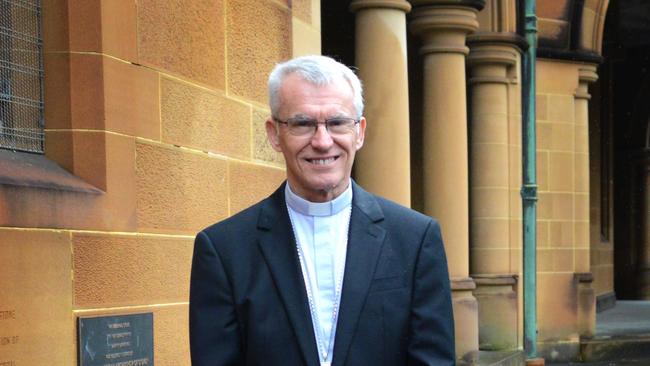Catholic Church insurer’s insolvency battle amid abuse claims
The Catholic Church insurer wants to enter into a scheme of arrangement amid concerns about the long-term impact of abuse and other claims to avoid formal insolvency.

The Catholic Church insurer is planning to enter a scheme of arrangement amid uncertainty over the quantum of long-term sex abuse and other claims and to avoid formal insolvency.
Catholic Church Insurance chairman Joan Fitzpatrick has written to policy holders proposing a scheme of arrangement, which is a common procedure in global insurance markets amid uncertain future claims.
Ms Fitzpatrick said that it was possible that further claims could emerge that could endanger CCI’s solvency, “resulting in significant impacts on policy holders’’.
A scheme of arrangement, she said, would seek to ensure that a formal insolvency process was avoided.
“Based on estimates of claims as at end of May 2023, CCI currently has sufficient assets to meet its liabilities as they fall due,’’ Ms Fitzpatrick writes.
“However, the claims situation is uncertain both in respect of Professional Standards (abuse claims) and other lines of business underwritten by CCI and is subject to significant complexity.
“CCI is therefore proposing a scheme as a prudent precaution to ensure a fair, equitable and managed regime would be implemented quickly for the benefit of policyholder creditors in the event CCI might otherwise become insolvent.’’
CCI is working with external advisers to formalise the process, but has been clear to policy holders that the impact on customers – which include Catholic parishes, schools, hospitals and related entities – could be significant if claims costs blow out.
Ms Fitzpatrick said CCI was proposing a contingent scheme of arrangement under the Corporations Act.
This would allow policyholder claims to be paid in full as long as CCI remained solvent.
It would have provision for pro-rata payment of claims if the were to become insolvent ‘’but for the existence of the scheme’’.
“A scheme of the kind to be proposed by CCI becomes legally binding on CCI and on relevant policyholder creditors, whether they have actual of contingent claims,’’ she said.
CCI has notified the insurance industry regulator and has been working for years to deal with the fallout of abuse claims.
The post-Institutional Abuse Royal Commission environment has led to some significant changes to the way that abuse claims are dealt with in different states, as well as subsequent court decisions that have paved the way for higher claims.
The church has said that it will honour outstanding abuse claims, with Australian Catholic Bishops Conference president Timothy Costelloe and the other bishops aware of the challenges.
CCI lost $192m in 2020-21 and nearly $250m the previous financial year; it had been seeking more financial support before deciding to wind down.
The broad landscape of abuse claims is causing headaches among administrators, with significant pressures on smaller parts of the church.
The Australian revealed this year that CCI had voluntarily entered a so-called run-off, which meant that CCI had stopped writing new business and stopped renewing policies.
The effect of this was profound within the church and its many offshoots in Australia.
One of the key issues is the ongoing uncertainty about insurance claims that can be spread out over decades.
In order for the scheme of arrangement to be implemented, it will be put to a vote of relevant policy holder creditors
There will be policyholder briefings starting Friday and heading into August.
A scheme of arrangement would need at least 50 per cent support of voting policyholders and later ratified by a court.
“Once the scheme becomes effective it will bind the scheme creditors to the terms of the scheme, irrespective of whether or not they voted in favour of the scheme or at all,’’ Ms Fitzpatrick said.
“Other creditors including suppliers, service providers and employees will not be subject to the scheme to ensure that CCI can continue to manage its run-off in an orderly manner.’’





